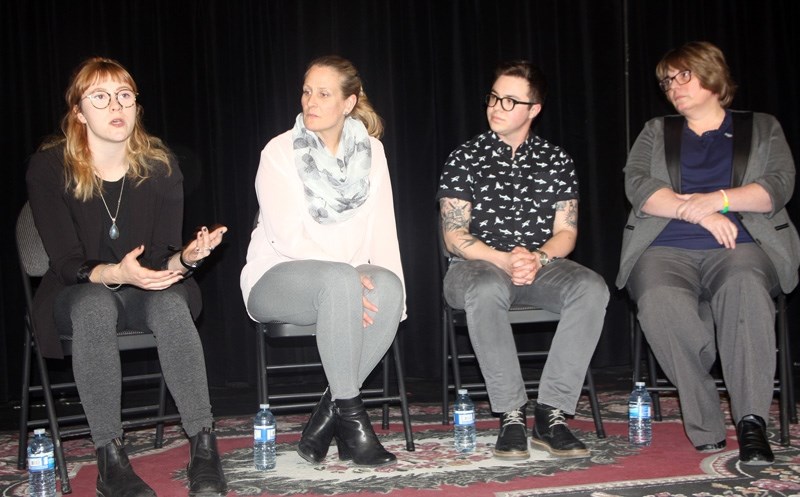Family, support and love are key to supporting trans youths.
Approximately 25 people — parents, students, and teachers — attended the showing of the National Geographic documentary, The Gender Revolution at the Rotary Performing Arts Centre on March 14. The film was presented by the Local Foothills ATA Diversity Equity Human Rights Committee.
Committee co-chairperson Paulette Morck, a guidance counsellor at Highwood High School, presented some startling statistics concerning the struggles trans teens face in the province, from the 2017 report: Being Safe, Being Me in Alberta: Results of the Canadian Trans Youth Survey. One of those stats included the fact that 67 per cent of trans youth aged 18 or younger had seriously considered suicide with just under 41 per cent making at least one attempt.
“In looking at these statistics is it reassuring that this group has gathered tonight to learn and discuss and move forward so our trans youth can feel safe and supported in all parts of their life,” Morck told the audience.
Verna Staples, a mother of a trans son, was one of four panelists for a Q&A after the showing of the documentary.
“I would have loved to have seen this documentary about 15 years ago,” she said with a laugh. “I was very fortunate as a parent because my son didn’t come out until he was well past puberty — he got to go through puberty twice. He was able to understand what he needed and what he wanted, and thanks to the Internet, I just had a plateful of ‘hi mom, here’s where we are at today.’
“In rural Alberta, I can’t really say we are the best in our generation about discussing these things. So I felt very lost and quite didn’t know where to go next.”
She said her son played a role in her becoming more educated on the issuesubject, as was Morck, who was a guidance counsellor at Black Diamond’s Oilfields High School at the time.
“I believe there is a lot more support out there had I been paying more attention,” Staples said.
A family making and accepting the transition is key, Staples added
“I would wish that every child’s whole family is willing to make that transition with them,” she said. “That parents can find — and it’s not always easy — those first few words, particularly when the child is older, but you need to have that conversation, sooner than later.”
Through education, she said those conversations will become easier.
“My wish is that people learn about it and talk about it, so that parents who are presented with this conversation are more able to handle it…. and be there to support their kids,” Staples said.
Morck stressed it was important not to label individuals.
“It’s not up to us to label them – oh you are gay, oh you are straight,” Morck said. “That is not up to us. Our job is to love them for who they are and accept them for who they are. If they are identifying a label, then respect that and respect them for who they are.”
Hilary Mutch, the LGBTQ youth education co-ordinator for the Calgary Sexual Health Centre, said the centre and Alberta Health Services have information concerning transgender and youth.
To see the Being Safe, Being Me in Alberta: Results of the Canadian Trans Youth Survey go to saravyc.sites.olt.ubc.ca/files/2017/10/SARAVYC_Trans-Youth-Health-Report_Alberta-V2-WEB.pdf
.




